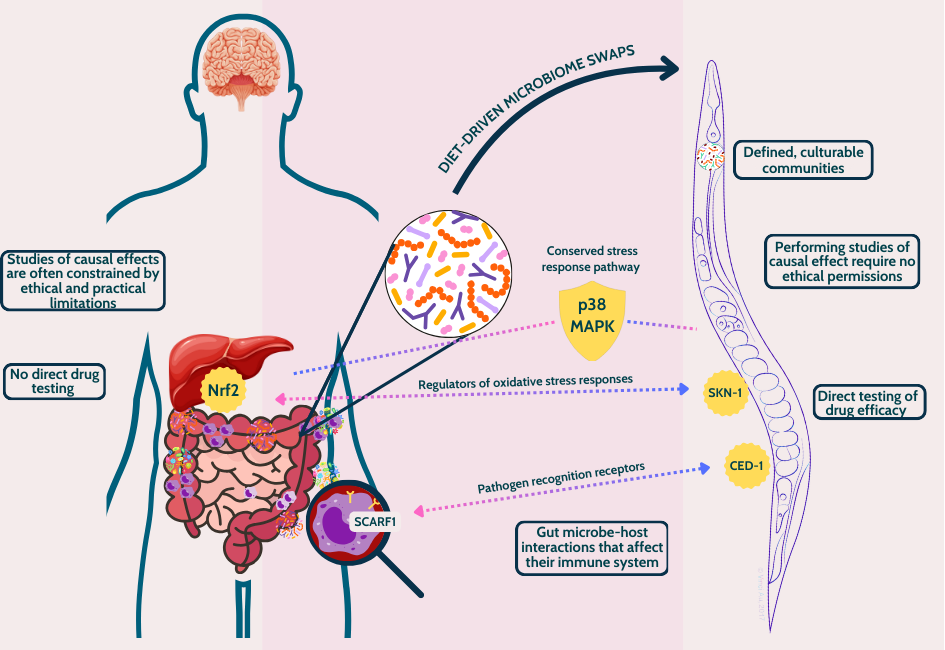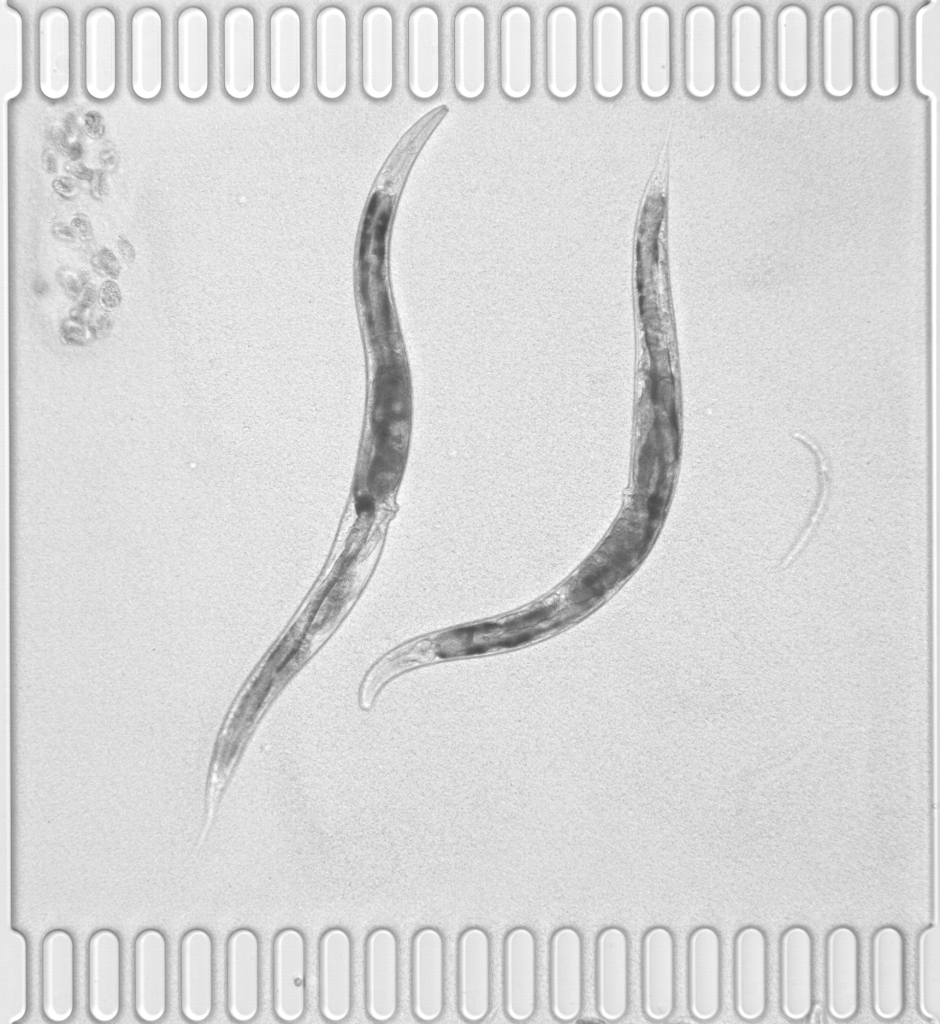How C. elegans is accelerating breakthroughs in aging and human health
Tiny Worm, Massive Impact
What if one of the most powerful tools in the fight against aging was a transparent worm barely 1mm long?
Meet Caenorhabditis elegans, a humble nematode that’s quietly revolutionizing our understanding of human health, mitochondrial dysfunction, and lifespan extension. In an era where biotech innovation is racing ahead, C. elegans stands out as a high-throughput, cost-effective, and ethically advantageous model organism that brings whole-body systems biology into sharper focus. This isn’t just lab talk, it’s the foundation for real-world breakthroughs
Why C. elegans? A Model Built for Speed and Scale
Aging is a full-body phenomenon. While traditional models like cell cultures and organoids are powerful, they can’t replicate the complexity of multicellular interactions. On the other hand, mammalian models like mice are more representative, but they’re slow, expensive, and raise ethical concerns.
Enter C. elegans
With a lifespan of just ~3 weeks, a fully sequenced genome, and conserved aging pathways (including insulin signaling and mitochondrial function), C. elegans delivers rare speed without sacrificing biological depth. Add in its transparency, which enables live imaging of cellular processes, and the result is a tool tailor-made for high-throughput aging research.
From Gut Microbes to Human Health: The Urolithin A Success Story
The power of C. elegans as a model isn’t theoretical. It’s proven.
In 2016, scientists used this fascinating model to show that Urolithin A, a gut microbiome metabolite, could activate mitophagy, the cellular process of clearing damaged mitochondria. The treated worms lived longer, moved better, and aged more slowly [1].
Rodent studies confirmed enhanced muscle endurance and mitochondrial function [1]. And eventually, human clinical trials demonstrated improved muscle strength and aerobic capacity in middle-aged adults [2], all from a compound first validated in worms.
This isn’t just translation: it’s transformation. It also sparked our own founders to create a solution built to accelerate such discoveries using the very technology that brought Urolithin A to market.

What makes this tiny worm so extraordinary?

C. elegans is well-suited for genetic manipulation and has a transparent body, making it possible to study and directly observe host-microbe interactions in real time. Furthermore, its brief lifecycle and the ability to grow it under controlled microbial conditions support fast, large-scale experimental studies.
Furthermore, C. elegans also exhibits remarkable conservation with human biological systems.
- It shares a functional homolog with the human Nrf2 protein (SKN-1), which is crucial in maintaining cellular homeostasis and regulating responses to oxidative stress [3].
- Beyond its natural habitat, C. elegans has proven invaluable for studying human-relevant pathogens like Salmonella and Shigella decoding conserved defence mechanisms as p38 MAP kinase signaling cascade through monoculture studies [4].
- Conserved molecular players like CED-1 (akin to human SCARF1, a receptor for pathogen recognition), highlight the potential of this nematode as a model for studying immune-related pathologies and screening therapeutic interventions [5].
Finally, C. elegans bacterivore behavior make it an ideal model for studying complex microbiomes. By simply changing its diet, researchers can effortlessly perform microbiome transplantations [6].
Together, all these features make C. elegans a powerful tool for unraveling mechanisms of dysbiosis, microbial metabolism, and therapeutic interventions.
Mitochondrial Meltdowns and Real-Time Solutions
One of aging’s most destructive forces? Mitochondrial dysfunction.
In aging C. elegans, we see:
- Reduced ATP production
- Elevated ROS (reactive oxygen species)
- Accumulated mtDNA damage
These same signatures plague aging human tissues, linking mitochondrial breakdown to diseases like Parkinson’s and MELAS. Today, researchers can even engineer human mitochondrial genes into C. elegans, creating live models of complex disorders in just days.
Modern C. elegans research is powered by:
- Automated imaging systems
- AI-driven, high-content phenotyping
The result? Scalable, quantitative insights into how aging unfolds and how we might stop it while also improving healthspan.
The Future of Longevity Starts Small
Whether it’s uncovering new drug targets, validating natural compounds, or modeling genetic diseases, C. elegans is proving indispensable. As aging research evolves, integrating AI-powered analysis, automated screening, and translational platforms built around model organisms like C. elegans will be critical.

References
[1] Stojanov, S., Berlec, A., & Štrukelj, B. (2020). The influence of probiotics on the firmicutes/bacteroidetes ratio in the treatment of obesity and inflammatory bowel disease. Microorganisms, 8(11), 1715.
[2] Singh, A., D’Amico, D., Andreux, P. A., Fouassier, A. M., Blanco-Bose, W., Evans, M., … & Rinsch, C. (2022). Urolithin A improves muscle strength, exercise performance, and biomarkers of mitochondrial health in a randomized trial in middle-aged adults. Cell Reports Medicine, 3(5).
[3] Blackwell, T. K., Steinbaugh, M. J., Hourihan, J. M., Ewald, C. Y., & Isik, M. (2015). SKN-1/Nrf, stress responses, and aging in Caenorhabditis elegans. Free Radical Biology and Medicine, 88, 290-301.
[4] Walker, A. C., Bhargava, R., Vaziriyan-Sani, A. S., Pourciau, C., Donahue, E. T., Dove, A. S., … & Czyż, D. M. (2021). Colonization of the Caenorhabditis elegans gut with human enteric bacterial pathogens leads to proteostasis disruption that is rescued by butyrate. PLoS pathogens, 17(5), e1009510.
[5] Lukácsi, S., Farkas, Z., Saskői, É., Bajtay, Z., & Takács-Vellai, K. (2021). Conserved and Distinct Elements of Phagocytosis in Human and C. elegans. International Journal of Molecular Sciences, 22(16), 8934.
[6] Møller, K. V., Wesseltoft, J. B., Malazarte, R., Kousgaard, S. J., Nielsen, H. L., Yashiro, E., & Olsen, A. (2023). Usage of cultured human fecal microbiota for colonization of Caenorhabditis elegans to study host–microbe interaction. Applied Microbiology, 3(4), 1130-1143.
Accelerate your research with Nagi Bioscience today
Ready to further enhance your formulations and substantiate health claims? Discover how our C. elegans-based platform can accelerate your pipeline while reducing costs and accelerating your path to market.